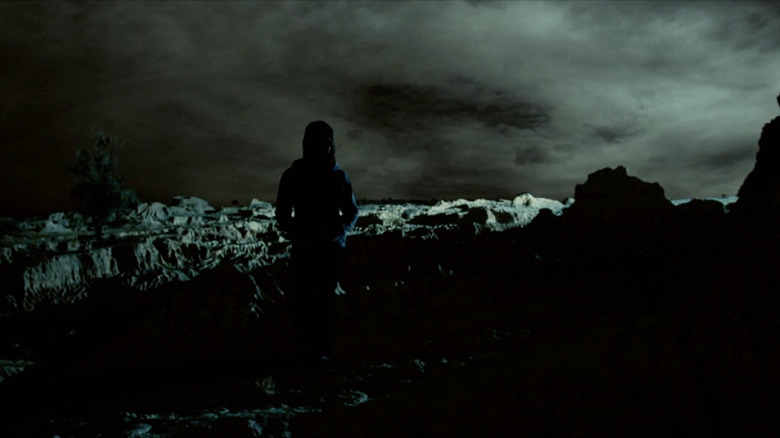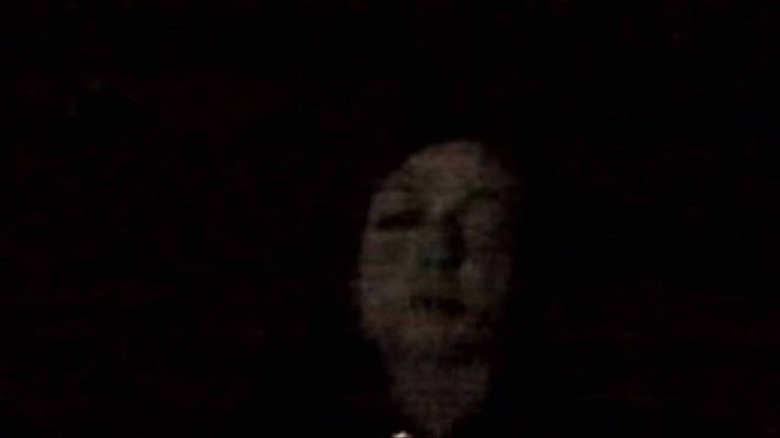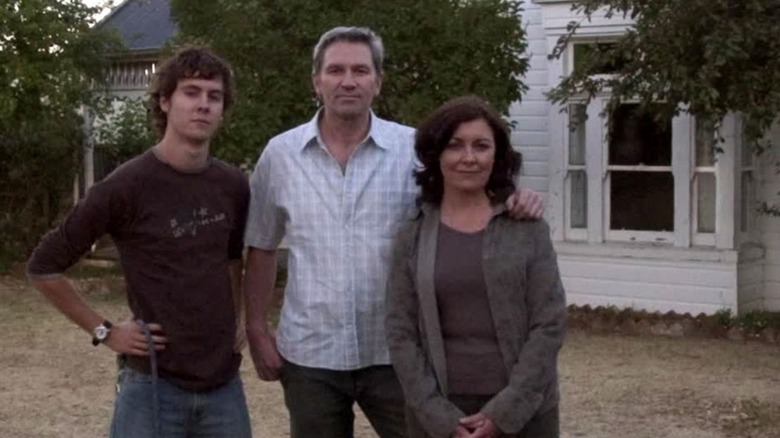The Daily Stream: Lake Mungo Is The Scariest Movie You've Never Seen
(Welcome to The Daily Stream, an ongoing series in which the /Film team shares what they've been watching, why it's worth checking out, and where you can stream it.)
The Movie: "Lake Mungo"
Where You Can Stream It: Shudder
The Pitch: A faux-documentary about the Palmer family. After teenager Alice Palmer dies, her parents and brother are understandably devastated. But their grief takes on a new form when they begin to believe that Alice's ghost is haunting their home. In their attempt to get to the bottom of the potential paranormal activity going on in their home, the Palmers uncover several different family secrets that cast things in a new, unsettling light.
Why It's Essential Viewing
When you give something the title of "scariest movie ever made," you're asking for trouble. Such a statement reeks of hyperbole, and what's scary to one person might not be scary to another. But when I tell you that I think "Lake Mungo" might just be the scariest movie ever made, I'm not pulling your leg, or exaggerating. I was raised on horror movies, and, as a result, I've grown more than a little desensitized to the genre. Don't get me wrong – I still love and enjoy horror movies, and there are plenty of films that I get a distinct "scary vibe" from. But very few of them actually scare me. Very few actually elicit anything resembling genuine unease. So when something comes along and chills me to the bone, I take note.
"Lake Mungo" arrived in 2008, riding the wave of found footage hype that was rekindled in 2007 with "Paranormal Activity." But while "Paranormal Activity" was a huge blockbuster that spawned an entire franchise, "Lake Mungo" fell through the cracks. For one thing, the film was Australian, so it didn't have that Hollywood push backing it up, or a slick marketing campaign to sell it to the masses. For another thing, while "Paranormal Activity" is designed like a carnival haunted house, with maximum potential to provide the viewer with plenty of jump-scares, "Lake Mungo" is far more subtle with its horrors. But that's part of what makes the film so damn scary.
The dread-soaked atmosphere of the film is established immediately as we see old-timey photographs from the age of spiritualism; photos that purport to show "real" ghosts. And then we're off to the spooky races. The fact that this is a low-budget Australian film works in the movie's favor, because most people will not recognize the actors here. It adds a touch of realism, as does the fact that the performers are all quite natural – we believe they're real people, and a real family. Rather than take a "found footage" approach, "Lake Mungo" is designed to resemble a documentary, complete with interviews, archival footage, and recreations. This, too, makes everything here feel extra real.
It Hasn't Reached Me Yet but It's on Its Way
As the film starts, we meet the Palmer family: parents June and Russell, and teen son Matthew. There was another member of the family: Alice. But as we learn, Alice drowned before the documentary began. But is Alice really gone? Matthew, an amateur photographer, thinks he's captured an image of Alice's ghost in the backyard. Cameras are set up around the house – and they, too, seem to be capturing Alice's spirit lurking about. Just what is going on here?
I'm not going to tell you much more about the plot, because the less you know, the more disturbed you're going to be. But what matters is that writer-director Joel Anderson slowly builds the dread as the film progresses. And coloring that dread is the horrible grief of the Palmer family. We're given little insights into their psychology: June is prone to insomnia and literally starts breaking into people's houses in some attempt to flee her own life; Russell berries himself in work; Matthew withdraws into himself. And there is horror in this grief, because grief is a byproduct of death – and death is coming for us all, sooner or later. As June says at one point, "Death takes everything eventually. It's the meanest, dumbest machine there is, and it just keeps coming and it doesn't care."
Eventually, the family finds themselves at Lake Mungo – a dry lake located in New South Wales, Australia. It's an ancient place; the site where the oldest human remains ever found in Australia were discovered. That ancient aura lends a touch of menace and mystery to the rocky landscape – like there's some sort of unknowable secret lurking out there, waiting, biding its time. Watching. "I feel like something bad is going to happen to me," we hear Alice say in audio recorded before her death."I feel like something bad has happened. It hasn't reached me yet but it's on its way."
That prevailing sense of inescapability is what makes "Lake Mungo" so damn scary. And just to twist the knife in deeper, Anderson concludes the film on a heartbreaking note that gives way to an end credit sequence peppered with footage guaranteed to give you the creeps – and make you reconsider everything you've just watched. And the horror will linger. I can distinctly remember the first time I watched "Lake Mungo." As I mentioned above, while I enjoy horror movies, very few of them actually scare me. But after the end credits had finished, I found myself feeling uneasy; nervous, even. I had a load of laundry in the dryer, and when the film ended, I went down into my basement to gather up the clothes and bring them upstairs to fold. I have never once in my life been afraid of a basement, and I was a full-grown man at the time this happened. And yet, as I stood down there, beneath the ground, in the cold stone dampness of the basement, I felt the hairs on the back of my neck prickle up. I felt like I was being watched by some unseen presence.
And maybe I was.


